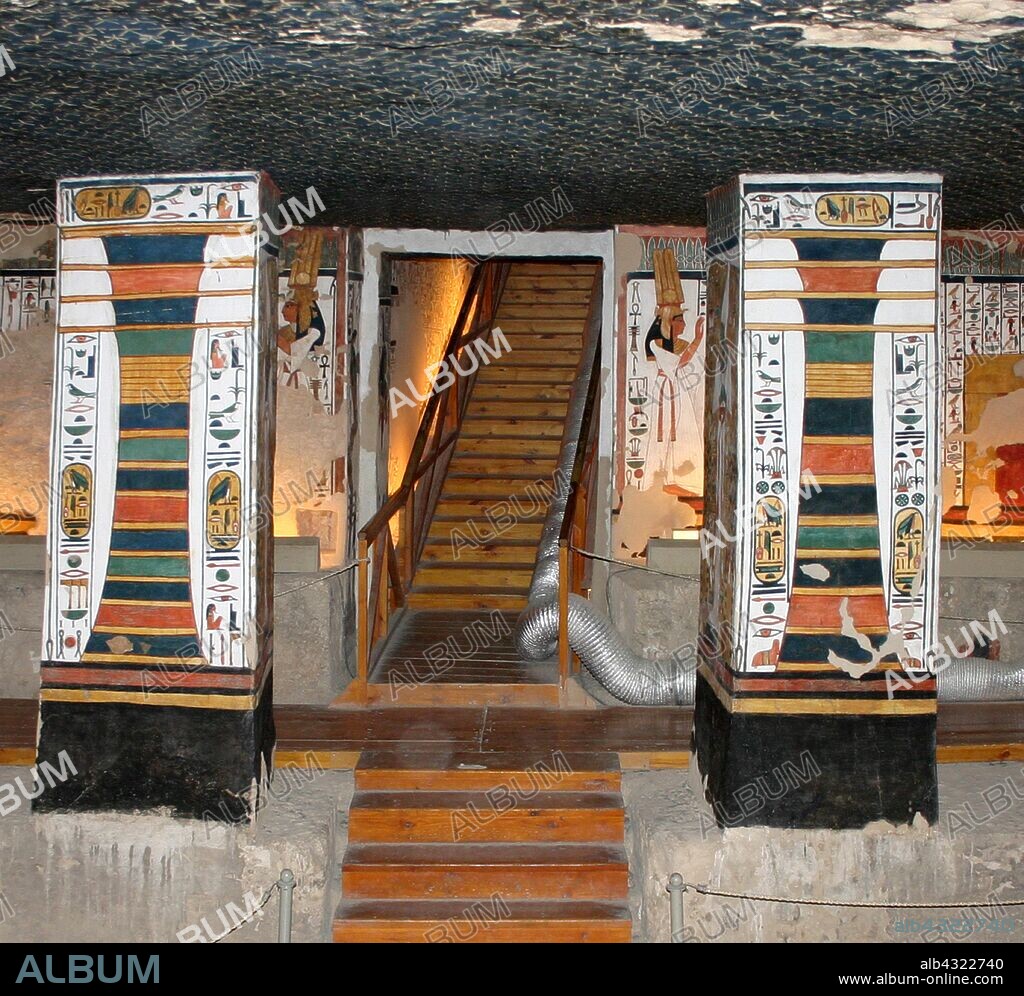alb4322740
The Djed pillar a symbol in Ancient Egypt, representing stability.

|
Add to another lightbox |
|
Add to another lightbox |



Title:
The Djed pillar a symbol in Ancient Egypt, representing stability.
Caption:
The Djed pillar a symbol in Ancient Egypt, representing stability. It is associated with the creator god Ptah and Osiris. Wall painting in the Egyptian god of the afterlife, the underworld, and the dead Wall Painting Inside the tomb (QV66) of Nefertari, in Egypt's Valley of the Queens. It was discovered by Ernesto Schiaparelli in 1904. It is called the Sistine Chapel of Ancient Egypt. In the Valley of the Queens, Nefertari's tomb once held the mummified body and representative symbolisms of her, like what most Egyptian tombs consisted of. Now, everything had been looted except for two thirds of the 5,200 square feet of wall paintings. ca. 1255 BC.
Credit:
Album / Universal Images Group / Universal History Archive
Releases:
Model: No - Property: No
Rights questions?
Rights questions?
Image size:
4772 x 4395 px | 60.0 MB
Print size:
40.4 x 37.2 cm | 15.9 x 14.6 in (300 dpi)
Keywords:
AFTERLIFE • ANCIENT EGYPT • BURIAL • CREATOR • DEAD • DJED PILLAR • EGYPT • EGYPTIAN • EGYPTIANS • EMBLEM • ERNESTO SCHIAPARELLI • FUNERARY • GOD • GRAVE • LUXOR • NEFERTARI • OSIRIS • PAINT • PAINTING • PTAH • QV66 • SEPULCHER • SÉPULCRE • SIMBOLOS • STABILITY • SYMBOL • TEBAS • THÈBES • TOMB • UNDERWORLD • VALLEY OF THE QUEENS • WALL
 Pinterest
Pinterest Twitter
Twitter Facebook
Facebook Copy link
Copy link Email
Email

